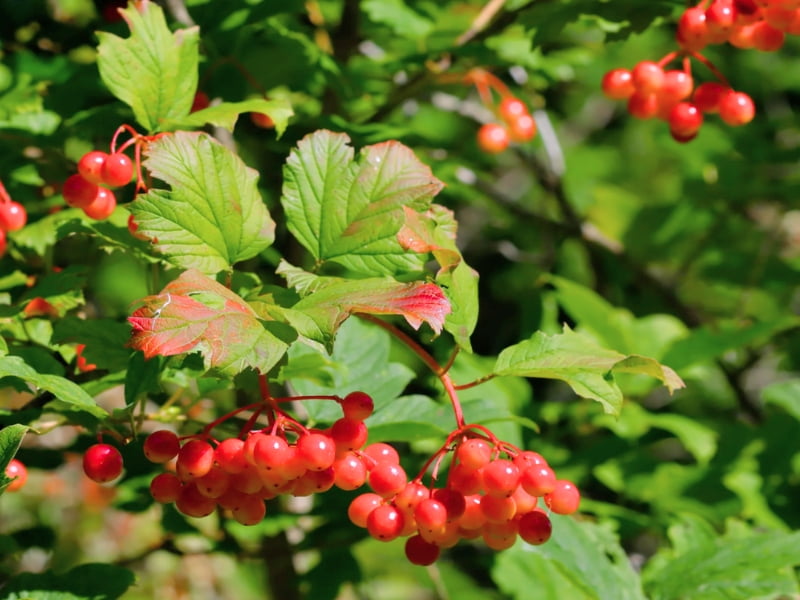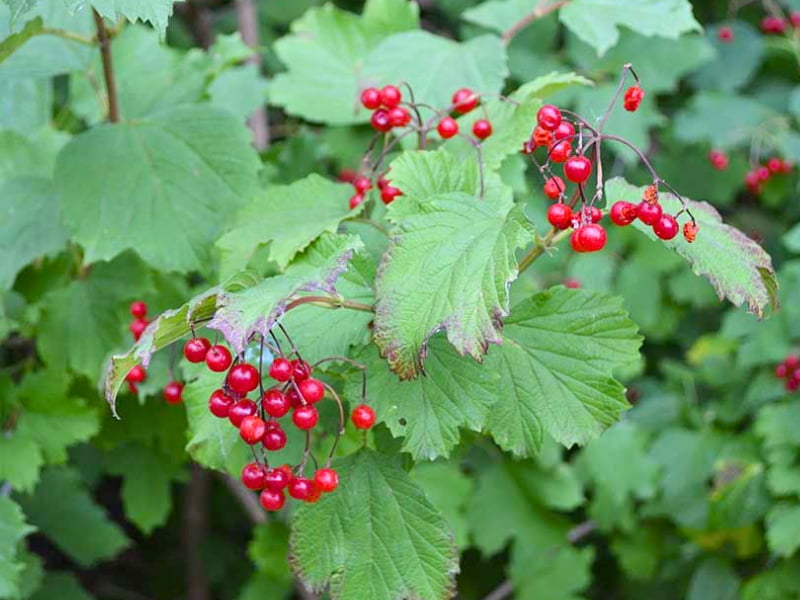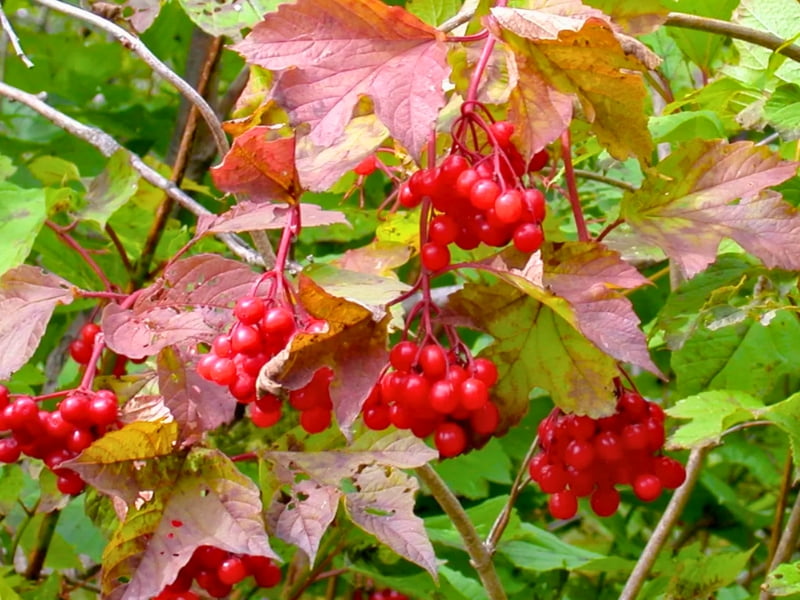American Cranberry, also commonly known as Vaccinium macrocarpon, or large cranberry, is a North American native plant. This fascinating species, belonging to the heath family (Ericaceae), thrives in unique acidic bog environments.
At Gardencenterpoint.com, we provide the most reliable and comprehensive resources to understand and cultivate various plants, including options to purchase American Cranberry plants. We also offer numerous guides on growing conditions, and potential health benefits.

What you need to know about American Cranberry
The American Cranberry (Vaccinium macrocarpon) is more than just a Thanksgiving side dish. It’s a fascinating plant with a rich history, unique growing requirements, and a surprising array of uses. This vibrant red berry, native to North America, holds a significant place in both culinary traditions and modern health research. Let us explore its journey and reveal the full potential.
| Common name | American Cranberry, Large Cranberry, Bearberry |
| Botanical name | Vaccinium macrocarpon |
| Family | Ericaceae (Heath Family) |
| Genus | Vaccinium |
| Species | macrocarpon |
| Origin | North America (Eastern and Central regions) |
| Life cycle | Perennial |
| Plant type | Woody, trailing evergreen shrub |
| Hardiness zone | 2-7 (USDA) |
| Sunlight | Full Sun (at least 6 hours) |
| Maintenance | Moderate to High (due to specific growing requirements) |
| Water | High, consistent moisture, but well-drained (except during flooding periods) |
| Drainage | Well-drained, acidic, sandy soil is essential |
| Spacing | 1-2 feet between plants |
| Flowering period | Late Spring to Early Summer (typically May-June) |
| Height | 4-8 inches (trailing vines can spread several feet) |
| Growth rate | Slow to Moderate |
| Flower color | Pinkish-white |
| Stem color | Reddish-brown, becoming woody with age |
| Fruit Color | Deep red when ripe |
| Flower benefit | Attracts pollinators (bees) |
| Garden style | Bog Garden, Specialty Garden, Native Plant Garden |
| Uses | Culinary (sauces, juices, baked goods), Medicinal (UTI prevention), Ornamental (ground cover in suitable conditions) |
| Soil pH | 4.0-5.5 (acidic) |
A Historical Berry: From Native Americans to Modern Tables
The American Cranberry has a long and storied history, deeply intertwined with the indigenous peoples of North America. Native American tribes, such as the Wampanoag and Lenape, utilized cranberries for centuries, not only as a food source but also for medicinal purposes and as a natural dye. They recognized the berry’s preservative qualities, using it in pemmican, a mixture of dried meat, fat, and cranberries, to sustain them through long winters.
European settlers quickly adopted the cranberry, learning from Native Americans how to cultivate and utilize it. By the early 19th century, commercial cranberry cultivation began in Massachusetts, and it has since spread to other regions of the United States and Canada.
Botanical Breakdown: Understanding Vaccinium macrocarpon
The American Cranberry is a low-growing, trailing evergreen shrub. It belongs to the Vaccinium genus, which also includes blueberries, huckleberries, and lingonberries. Key characteristics include:
- Growth Habit: Creeping, woody vines that form dense mats.
- Leaves: Small, elliptical, and evergreen.
- Flowers: Delicate, pinkish-white flowers that bloom in late spring or early summer.
- Fruit: The iconic red berries, which develop from the flowers and ripen in the fall.
- Root System: It’s important to remember the root system is adapted to acidic, wet conditions.
The Unique Ecosystem
Cranberries have very specific growing requirements, thriving in acidic, sandy bogs. These bogs are typically layered with sand, peat, gravel, and clay, creating a unique environment that is both waterlogged and nutrient-poor.
- Natural Bogs: Formed over thousands of years by glacial deposits.
- Man-Made Bogs: Constructed to mimic the conditions of natural bogs.
- Water Management: Crucial for cranberry cultivation, with flooding used for frost protection, pest control, and harvesting.
- Winter Flooding: Protect the vines from freezing.
- Spring Flooding: Control early-season pests.
- Harvest Flooding: Allows berries to float to the surface for easy collection.
Major Cranberry Producing Regions in the US
Cranberry production is concentrated in a few key states, with Wisconsin being the leading producer. Here’s a breakdown of the major producing regions, along with estimated production figures for 2025 (based on projections and historical data):
| State | Estimated Production (Barrels – 100 lbs) | Percentage of Total US Production | Key Growing Areas |
| Wisconsin | 5.0 million | ~60% | Central and Northern Wisconsin |
| Massachusetts | 2.0 million | ~24% | Southeastern Massachusetts (Cape Cod) |
| New Jersey | 0.6 million | ~7% | Pine Barrens region |
| Oregon | 0.5 million | ~6% | Southern Coastal Region |
| Washington | 0.2 million | ~3% | Southwestern Coastal Region |

(Note: These are estimates. Actual production can vary based on weather conditions, pest pressures, and other factors. Source: USDA National Agricultural Statistics Service (NASS) and industry projections.)
These numbers reflect ongoing trends in cranberry production, with Wisconsin maintaining its dominance. Advances in growing techniques and sustainable practices are also influencing yields and environmental impact.
Health Benefits of American Cranberries
Beyond their tart flavor, American Cranberries are packed with nutrients and bioactive compounds that offer a range of potential health benefits. While more research is always ongoing, numerous studies have highlighted the positive effects of cranberry consumption.
A Rich Source of Antioxidants
American Cranberries are exceptionally high in antioxidants, particularly proanthocyanidins (PACs). These PACs are unique to cranberries and are responsible for many of their health-promoting properties.
- What are Antioxidants? Antioxidants protect your cells from damage caused by free radicals, unstable molecules that contribute to aging and various diseases.
- Types of PACs: Cranberries contain A-type PACs, which are different from the B-type PACs found in other fruits and vegetables. This difference is crucial to their unique benefits.
- Antioxidant Capacity: Cranberries have a high Oxygen Radical Absorbance Capacity (ORAC) score, a measure of their antioxidant power.
Urinary Tract Health: A Well-Known Benefit
One of the most well-established benefits of American Cranberries is their ability to help prevent urinary tract infections (UTIs).
- Mechanism of Action: The A-type PACs in cranberries prevent bacteria, particularly E. coli, from adhering to the walls of the urinary tract. This makes it more difficult for bacteria to multiply and cause infection.
- Study: JAMA Internal Medicine published several studies that prove the positive effects of American Cranberry for helping preventing urinary tract infections (UTIs).
- Forms of Cranberry for UTI Prevention: Cranberry juice, cranberry capsules, and dried cranberries can all be effective, but unsweetened forms are generally recommended to avoid added sugar.
Other Potential Benefits
Research suggests that American Cranberries may offer a range of other health benefits, although more studies are needed to confirm these findings:
- Heart Health: Cranberries may help improve cholesterol levels, reduce blood pressure, and decrease inflammation, all of which are risk factors for heart disease.
- Gut Health: The fiber in cranberries can promote healthy digestion, and the PACs may have prebiotic effects, supporting the growth of beneficial gut bacteria.
- Anti-Cancer Properties: Some laboratory studies have shown that cranberry extracts can inhibit the growth of certain cancer cells, but human studies are limited.
- Immune Support: The vitamin C and other antioxidants in cranberries can contribute to a healthy immune system.
- Oral Health: Cranberries may help prevent bacteria from sticking to teeth, potentially reducing the risk of cavities and gum disease.
Nutritional Breakdown of American Cranberries (per 1 cup, raw)
| Nutrient | Amount | % Daily Value (DV) |
| Calories | 46 | 2% |
| Carbohydrates | 12 g | 4% |
| Fiber | 4 g | 14% |
| Sugar | 4 g | |
| Vitamin C | 14 mg | 16% |
| Manganese | 0.36 mg | 16% |
| Vitamin E | 1.2 mg | 8% |
| Vitamin K | 5 mcg | 4% |
| Copper | 0.06 mg | 7% |
(Source: USDA FoodData Central)
This table highlights the key nutrients found in raw cranberries. It’s important to note that processed cranberry products, like sweetened cranberry juice or cranberry sauce, may have significantly different nutritional profiles due to added sugars and other ingredients.
Growing American Cranberries
Growing American Cranberries at home can be a rewarding experience, although it requires specific conditions and careful management. While it’s not for every gardener, those with the right environment and dedication can enjoy fresh, homegrown cranberries.
Site Selection and Soil Preparation
The most crucial aspect of growing cranberries is replicating their natural bog environment. This means:
- Acidic Soil: Cranberries require a soil pH between 4.0 and 5.5. A soil test is essential to determine the existing pH and amend it accordingly.
- Sandy Soil: Well-drained, sandy soil is ideal. If your soil is heavy clay, you’ll need to create a raised bed or container filled with a suitable soil mix.
- Sunlight: Cranberries need at least six hours of direct sunlight per day.
- Water Availability: Consistent moisture is critical, but the soil should not be constantly waterlogged (except during specific periods like flooding).
Creating a Cranberry Bog (Raised Bed or Container):
- Choose a Location: Select a sunny spot with good drainage.
- Build a Frame: Construct a raised bed frame using rot-resistant wood (like cedar) or use a large, plastic container.
- Line the Bed: Line the frame with a heavy-duty, pond liner to create a waterproof barrier.
- Layer the Soil:
- Bottom Layer: Gravel or coarse sand for drainage.
- Middle Layer: A mixture of peat moss and sand (about 2:1 ratio).
- Top Layer: A layer of pure sand (about 2-4 inches).
- Acidify the Soil: If your soil test indicates a higher pH, you can lower it by adding sulfur or using an acidifying fertilizer.
Planting and Propagation
- Planting Time: Spring or fall is the best time to plant cranberries.
- Source of Plants: Purchase cranberry plants from a reputable nursery like those featured on Gardencenterpoint.com. We provide a directory of trusted nurseries that specialize in native plants.
- Planting Depth: Plant the cranberry vines at the same depth they were growing in their containers.
- Spacing: Space the plants about 1-2 feet apart.
- Watering: Water thoroughly after planting and keep the soil consistently moist.
- Propagation: American Cranberry can be propagated by Stem Cuttings and Layering.
Ongoing Care: Watering, Fertilizing, and Pest Control
- Watering: Cranberries need consistent moisture, but they don’t like to be constantly waterlogged. Monitor the soil moisture regularly and water deeply when the top inch of soil feels dry.
- Fertilizing: Cranberries are light feeders. Use an acid-loving fertilizer (like those formulated for blueberries or azaleas) sparingly, following the package instructions.
- Weed Control: Weeds can compete with cranberries for nutrients and water. Mulch with pine needles or sand to suppress weeds.
- Pest and Disease Control: Cranberries can be susceptible to certain pests and diseases, such as cranberry fruitworm, cranberry weevil, and fungal diseases. Monitor your plants regularly and take appropriate action if you notice any problems. Integrated Pest Management (IPM) practices are recommended.
Harvest
Cranberries typically ripen in the fall, usually from September to November, depending on your location and the variety.
- Dry Harvesting: Picking the berries by hand. This method is suitable for small-scale growers.
- Wet Harvesting: Flooding the bog and using specialized equipment to dislodge the berries, which then float to the surface for collection. This is the method used by commercial growers.
- Signs of Ripeness: Ripe cranberries are deep red and firm to the touch. They will also bounce if dropped.
Winter Protection
In colder climates, cranberries need winter protection to prevent damage from freezing temperatures.
- Flooding: Flooding the bog with several inches of water before the first hard freeze creates a layer of ice that insulates the plants.
- Mulching: Applying a thick layer of pine needles or straw can also provide insulation.

Culinary Uses of American Cranberries
American Cranberries are incredibly versatile in the kitchen, adding a tart and vibrant flavor to a wide range of dishes.
Classic Cranberry Sauce: A Thanksgiving Staple
Cranberry sauce is a must-have for Thanksgiving dinner, but it can be enjoyed year-round. There are countless variations, from simple recipes with just cranberries, sugar, and water to more elaborate versions with added spices, fruits, and nuts.
Basic Cranberry Sauce Recipe:
- 12 ounces fresh or frozen cranberries
- 1 cup sugar
- 1 cup water
- Optional: orange zest, cinnamon, cloves, ginger
Instructions:
- Combine all ingredients in a saucepan.
- Bring to a boil over medium heat.
- Reduce heat and simmer for 10-15 minutes, or until the cranberries have burst and the sauce has thickened.
- Remove from heat and let cool.
Beyond Sauce: Sweet and Savory Applications
Cranberries can be used in a variety of sweet and savory dishes:
- Baked Goods: Add dried or fresh cranberries to muffins, scones, breads, and cookies.
- Salads: Toss dried cranberries into salads for a touch of sweetness and chewiness.
- Smoothies: Blend fresh or frozen cranberries into smoothies for a boost of antioxidants and flavor.
- Main Courses: Use cranberry sauce as a glaze for roasted meats or poultry.
- Snacks: Enjoy dried cranberries on their own or mixed with nuts and seeds for a healthy snack.
- Beverages: Make cranberry juice, cranberry cocktails, or cranberry-infused water.
Preserving Cranberries
Cranberries can be easily preserved to extend their shelf life:
- Freezing: Freeze fresh cranberries whole or chopped. They can be stored in the freezer for up to a year.
- Drying: Dry cranberries in a dehydrator or oven. Dried cranberries can be stored in an airtight container for several months.
- Canning: Make cranberry sauce, cranberry jelly, or cranberry chutney and can it for long-term storage.
Examples of enticing ways to use cranberries
- Cranberry and Brie Bites: Combine flaky puff pastry, creamy brie cheese, and tart cranberry sauce for an elegant appetizer.
- Cranberry, Feta, and Pecan Salad: Combine fresh spinach, crumbled feta cheese, chopped pecans, and dried cranberries for a flavorful and festive salad.
- Cranberry-Glazed Salmon: Brush salmon fillets with a glaze made from cranberry sauce, Dijon mustard, and honey for a delicious and healthy main course.
- Cranberry-Orange Scones: Add fresh or dried cranberries and orange zest to your favorite scone recipe for a bright and flavorful breakfast treat.
Addressing Common Questions and Concerns
Are fresh cranberries better than dried or juice?
Fresh cranberries offer the most nutritional benefits, as they haven’t been processed or had sugars added. Dried cranberries can be a good option, but look for unsweetened varieties. Cranberry juice can be part of a healthy diet, but choose 100% juice with no added sugar, and consume it in moderation.
Can I grow cranberries in a pot?
Yes, you can grow cranberries in a large pot, provided you create the right acidic, bog-like conditions. Follow the instructions outlined earlier for creating a raised bed or container.
How much cranberry should I consume daily for UTI prevention?
Research suggests that consuming about 8 ounces of cranberry juice cocktail or 1-2 cranberry capsules daily may help prevent UTIs. However, it’s always best to consult with your doctor for personalized advice.
Are there any side effects of consuming cranberries?
Cranberries are generally safe for most people, but consuming large amounts may cause stomach upset or diarrhea. Cranberry products may also interact with certain medications, such as blood thinners, so it’s important to talk to your doctor if you have any concerns.
Where can I buy high-quality cranberry plants?
At Gardencenterpoint.com, we connect you with a network of reputable nurseries that offer a wide selection of plants, including American Cranberry varieties. We provide detailed information about each nursery, including their location, specialties, and customer reviews, ensuring you find the best source for your gardening needs. We are not retailers, but a hub that brings garden centers, nurseries, and gardeners together.
The American Cranberry is a remarkable plant with a rich history, impressive health benefits, and diverse culinary uses. Whether you’re interested in cultivating your own cranberry bog, exploring new recipes, or simply learning more about this fascinating berry, Gardencenterpoint.com is your ultimate resource.
Explore Further:
- Browse our extensive plant database: Discover other fascinating plants that thrive in similar conditions, or explore a diverse range of species to enhance your garden.
- Check out our gardening guides: Learn about soil preparation, pest control, watering techniques, and more.
- Read reviews of gardening tools and equipment: Find the best tools to help you succeed in your gardening endeavors.
- Connect with local nurseries: Use our directory to find reputable nurseries near you that offer American Cranberry plants and other gardening supplies.
- Find American Cranberry products: We provide affiliate links to trusted sellers offering various cranberry products, from fresh berries to supplements.
Gardencenterpoint.com is committed to providing you with the most comprehensive and up-to-date information on all things gardening. We’re your trusted source in creating a thriving and beautiful garden, filled with the wonders of nature, including the incredible American Cranberry. We want our users to come back, share, save, and pin our guides and articles. Explore, learn, and grow with us.
